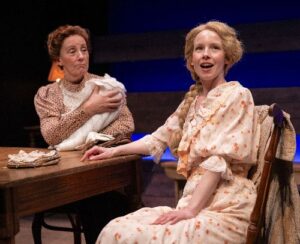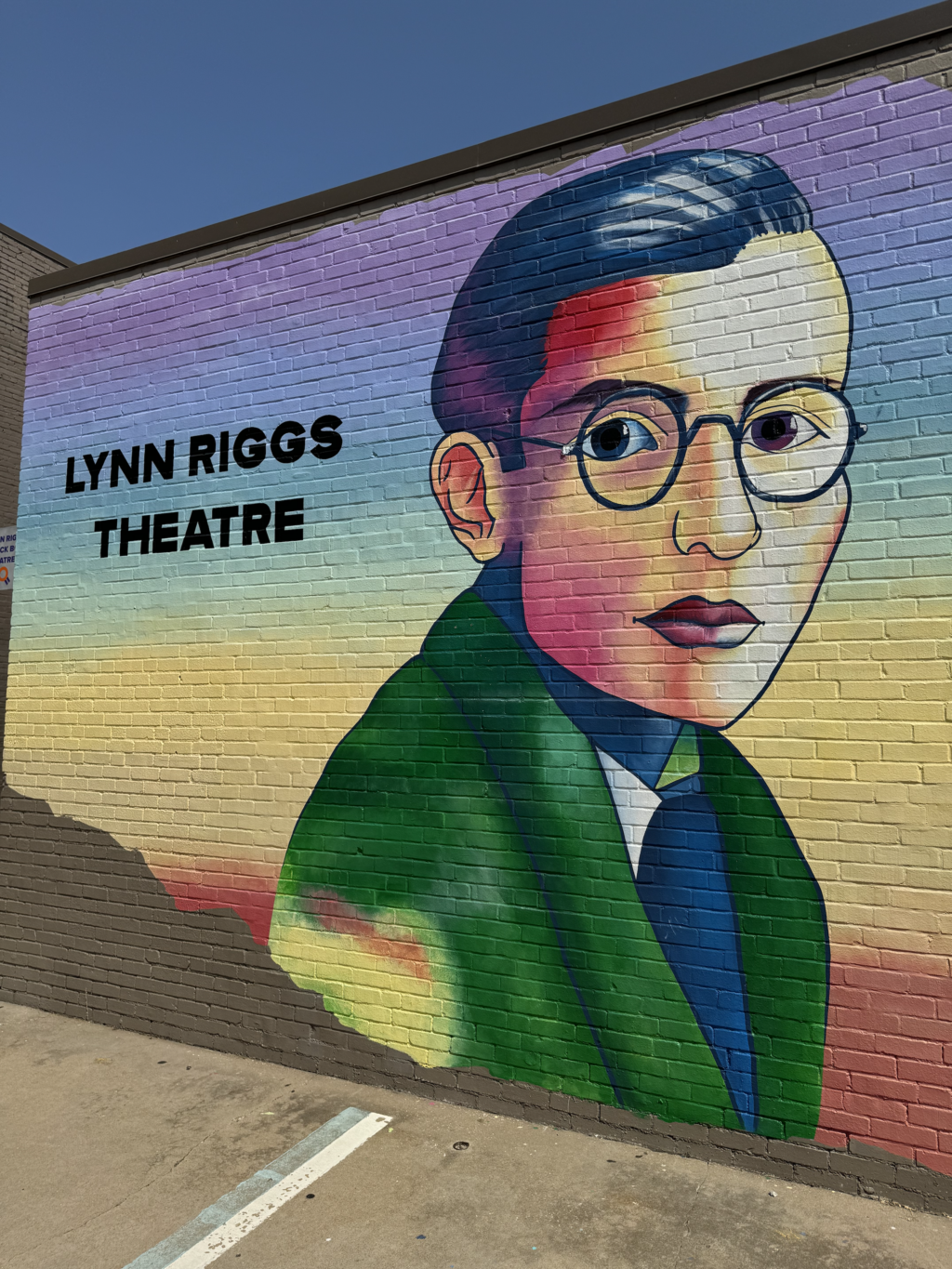Rethinking Gay Playwright Lynn Rigg’s Work in a New York Premiere
BY CHRISTOPHER BYRNE

How do we see classic plays with contemporary eyes? This isn’t a new question. For years, revivals have thought to put a more timely spin on Shakespeare, for example. The question, asked by producers directors, and, ultimately, audiences, is always what do classics have to say to contemporary audiences?
In recent seasons, we’ve seen updated versions of Oklahoma and 1776, for example, both of which sought to dig into some of the more serious—and, yes, even darker—issues raised by the plays.
Beyond just the plays, themselves, however, there is another question being asked: how does what we come to learn about the playwright change our perception of the play? This is a particularly relevant question when the playwright is a member of the LGBTQ+ community. For example, does the relatively recent acknowledgement that Thornton Wilder was bisexual affect how we perceive Our Town?
The further question, of course, is does it matter? In the theater, as in so many other areas of life, audiences generally see what they want to see, but increasing numbers of scholars—and productions—are considering this as they seek to understand work more fully both in the context of personal and cultural history and what resonates in the present. If, as Shakespeare said, the role of theater is to “hold the mirror up to nature,” shouldn’t we get the fullest reflection possible?
These are the questions Jesse Marchese is asking. Marchese is the dramaturgical advisor at The Mint Theater Company in Manhattan, where a production of Sumpn Like Wings by Lynn Riggs opened last week and runs through November 2.
Riggs (1899-1954) is perhaps best known for writing Green Grow the Lilacs, the play on which the musical Oklahoma is based. Riggs was, at least in some circles, openly gay and wrote nearly 30 plays during his career. He wrote about Oklahama, lived in Santa Fe but moved in broader entertainment circles. Certainly, he was known to be gay in Hollywood, where he counted Joan Crawford and Bette Davis as dear friends, and his most serious relationship was with Mexican American playwright Ramon Naya.
Riggs was also part Cherokee—about one-eighth, Marchese says. And in serving as dramaturg for the Mint production, he says, “it’s important for us to map these legacies and literary heritages. I think it’s similar for LGBTQ folks. And so, no, we’re, we’re not putting a gay reading on the play, but there are things that sort of come through that are really interesting. Riggs was particularly sensitive to the plight of women.”

The story of Sumpn Like Wings concerns Willie Baker, a 16-year-old girl in Oklahoma just after statehood who feels confined by her life working in her uncle’s boarding house. She wants to fly, and feels she has “sumpn like wings.”
“Essentially it’s men and it’s sexual violence. It’s the sexual violence of men. But we can see the, even if the mother seems kind of hard, she lives in a hard land and, and she’s made hard and hardy, and she’s just trying to protect her daughter.
“Riggs also also wrote brilliantly about masculinity. He often had sort of sensitive male characters who, who were kind of pushing against this sort of toxic, essentially American masculinity that kind of came through in this machismo culture.”
Marchese the themes Riggs raises are still very current, which is why The Mint is doing the play. Though it was written in 1925, the new production is the plays’ New York premiere. The Mint specializes in finding obscure plays and giving them full productions.
As Marchese has written of Riggs’ work, “His writings reflect the complex realities of marginalized identities in a prejudiced yet quickly changing world. His work celebrates the rebellious spirit of the outsider while examining their complicated and precarious relationship to the larger community.”
When I spoke with Marchese, he added, This is what makes Riggs important—and relevant. This is also why history matters. I think [LGBTQ+] people are conditionally folded into society, which means things can change. We always exist in opposition to the norm, which is straight. I think this is why looking at these writers and what they wrote about matters. What is interesting to me is the way he wrote about the nuclear family and about outsiders who didn’t really fit into their families.” Marchese likens that to a perspective on heteronormativity or the way toxic masculinity works that he can’t separate from the playwright personally and that is an issue society still struggles with.
Beyond history, it is the connection audiences make in the here and now with a piece, how they see themselves reflected on the stage, and think more about their own lives and world that is the power of theater. It’s to the credit of the Mint—and the benefit of audiences—that they are willing to look for the meaning in the moment.
Sumpn Like Wings
The Mint Theater
Theatre Row
410 West 42nd Street, Manhattan
Tues, Thurs, Fri, 7 p.m., Weds 2 p.m., Sat 2 p.m. & 7 p.m.
Tickets $39-$99 here.
Posted: October 13, 2024
Mural of Lynn Riggs against a rainbow backdrop outside of the Lynn Riggs Theatre at the Dennis R. Neill Equality Center in Tulsa, Oklahoma. In 2019, the painting was sadly defaced with homophobic rhetoric, but was quickly repainted and restored.
Photos: Lynn Riggs courtesy of Calremore Museum of History; Production Photo Maria Baranova; Mural photo courtesy Jesse Marchese.








More Stories
Off-Broadway Review: Trophy Boys
Broadway Preview: Lewis Flinn’s Cabaret
Off-Broadway Revew: The Imaginary Invalid